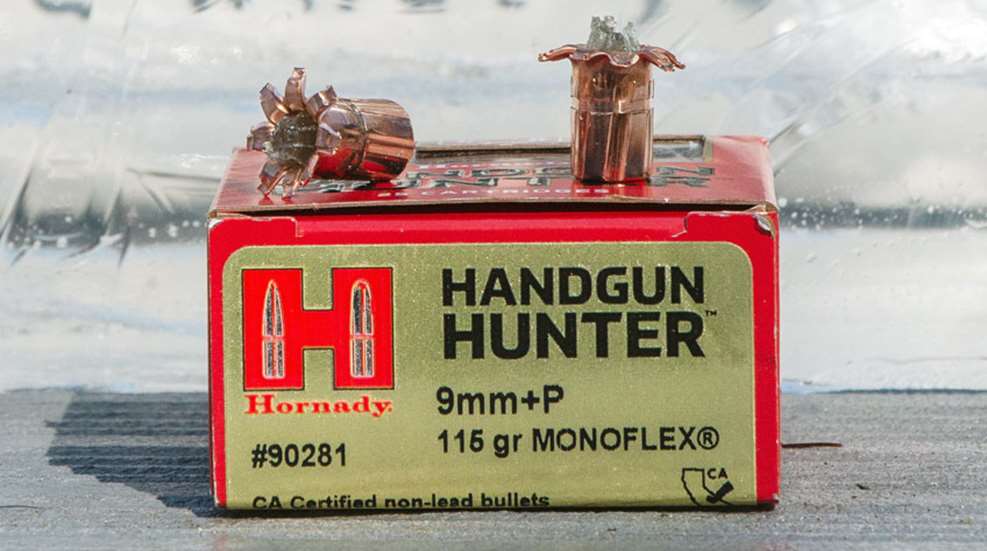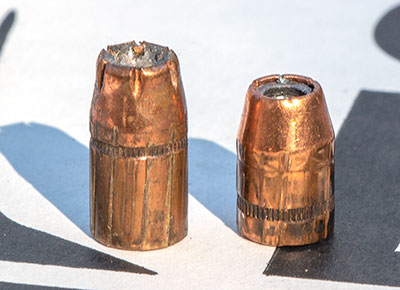
If you’re serious about carrying a handgun for personal protection, then you’ve probably taken the necessary steps to make sure your ammunition offers reliable functioning in your handgun. Some will run 25 to 50 rounds through their gun to make sure it will function; others will test as many as 100 to 500 rounds. While we might argue how many rounds it takes to confirm reliability, we cannot argue the importance of the process.
As common as checking the reliable function of your carry ammo is, what amazes me is the uncommonness of confirming its terminal performance. It seems the status quo is to take terminal performance for granted—if a manufacturer says a particular load performs in a certain way, we seem to just assume those claims as fact. Why is it OK to make an assumption about terminal performance, but not about reliability? After all, with quality, defensive-handgun ammunition, you’re paying for the terminal performance. That’s why good carry ammo costs so much.

I’ll admit: I’m a bullet geek. I’ve been mesmerized by the terminal performance of projectiles for as long as I’ve been shooting. As a result of that, I’ve conducted thousands of terminal-performance tests on my own and with the assistance of professional ballisticians. I even patented a terminal-performance testing media, and as a result of that work learned a lot about terminal ballistics. One of the things I learned is that while taking a manufacturer’s word on terminal performance might not be as bad as trusting a politician, it’s still not always a good idea.
There are two primary reasons for this: First is that terminal performance is driven by velocity; bullets—all expanding/deforming bullets—require a certain impact velocity to initiate expansion. Some guns, especially short-barreled guns, may not generate enough velocity to make a bullet expand, and manufacturers do not list minimum velocities on packaging. With the increasing tendency for manufacturers to make defensive handguns more compact, this is quite common with .380 ACP, .38 Spl. and .45 ACP loads.
The other driving factor behind terminal performance is bullet construction. A certain bullet design might deliver excellent terminal performance, but this can only happen if the velocity threshold is met and if the correct materials were used and assembled correctly. Over the years I’ve run across several instances where incorrect jacket or core materials were used, and they prevented the bullet from deforming/expanding.
Fortunately, there’s an easy way to test this. All you have to do is fire several rounds of your carry load into some sort of terminal-ballistic-testing medium for confirmation. The de facto standard for this has long been 10-percent ordnance gelatin, which was popularized by the FBI. Many think this is the only testing medium suitable for the purpose, but that could not be further from the truth—10-percent ordnance gelatin is just one of many terminal testing mediums.
If you’re not testing bullets for the FBI, there’s no reason to restrict yourself to using 10-percent ordnance gelatin. If you’ve ever made this stuff, you realize what an involved process it is, and if you’ve ever had a block of uncured 10-percent ordnance gelatin spill in your spouse’s brand-new refrigerator, you also realize this stuff has the potential to cause a divorce. Fortunately, thanks to a company by the name of Clear Ballistics, there is a viable and affordable alternative to confirming terminal performance.
Clear Ballistics offers blocks of terminal-testing material in various sizes. This material is a temperature-stable, synthetic substitute for organic ordnance gelatin, and sort of reminds me of a gummy bear, but it is odorless, colorless and is shelf stable from -10 to 95 degrees Fahrenheit. You can get a 6x6-inch square, 16-inch-long block for about $120; sometimes the company has sales, and you can save as much as 50 percent. A 16-inch block will contain nearly all defensive-handgun bullets fired from common defensive-handgun cartridges. In fact, with deliberate shot placement and switching ends, one block will contain as many as 10 shots from a defensive handgun. As always, follow all safety rules and never assume the block will stop a bullet—you must have a proper, safe backstop behind the block.
I know what you are thinking, the FBI says that only one round can be fired into a block of 10-percent ordnance gelatin or the test is invalid. Hey, you’re not working for the FBI; you’re only trying to confirm your defensive ammunition will expand and penetrate as advertised out of your handgun. I’m sure Clear Ballistics would like me to say that you should only fire one round into each block so it could sell you more blocks. But, for the purpose of confirming terminal performance, that’s simply not necessary. If you’re so inclined, you can even place layers of denim, leather or other stuff in front of the block to see how your ammo deals with intermediate barriers.
Get one of the 16-inch, 10-percent Ballistic Gelatin FBI Blocks from Clear Ballistics and fire a couple rounds of your carry ammo (from your carry pistol) into it to confirm that it works out of your handgun. Then, save the block until you rotate or change ammo, and test your new carry ammo the same way. It’s a good idea and an easy way to reliably confirm ammunition performance. With Clear Ballistics, it’s just as smart and just as easy to test your ammunition’s terminal performance.




































